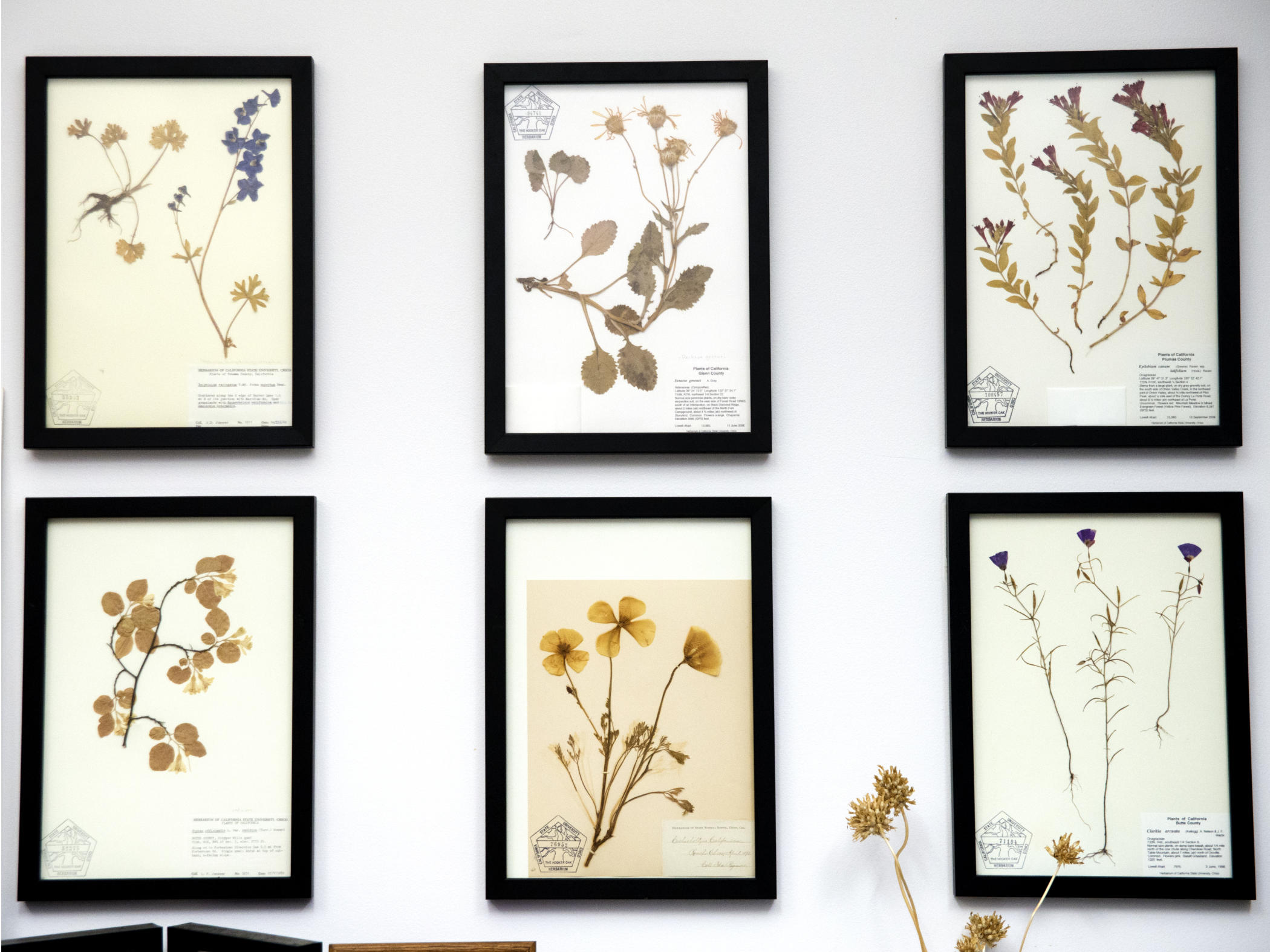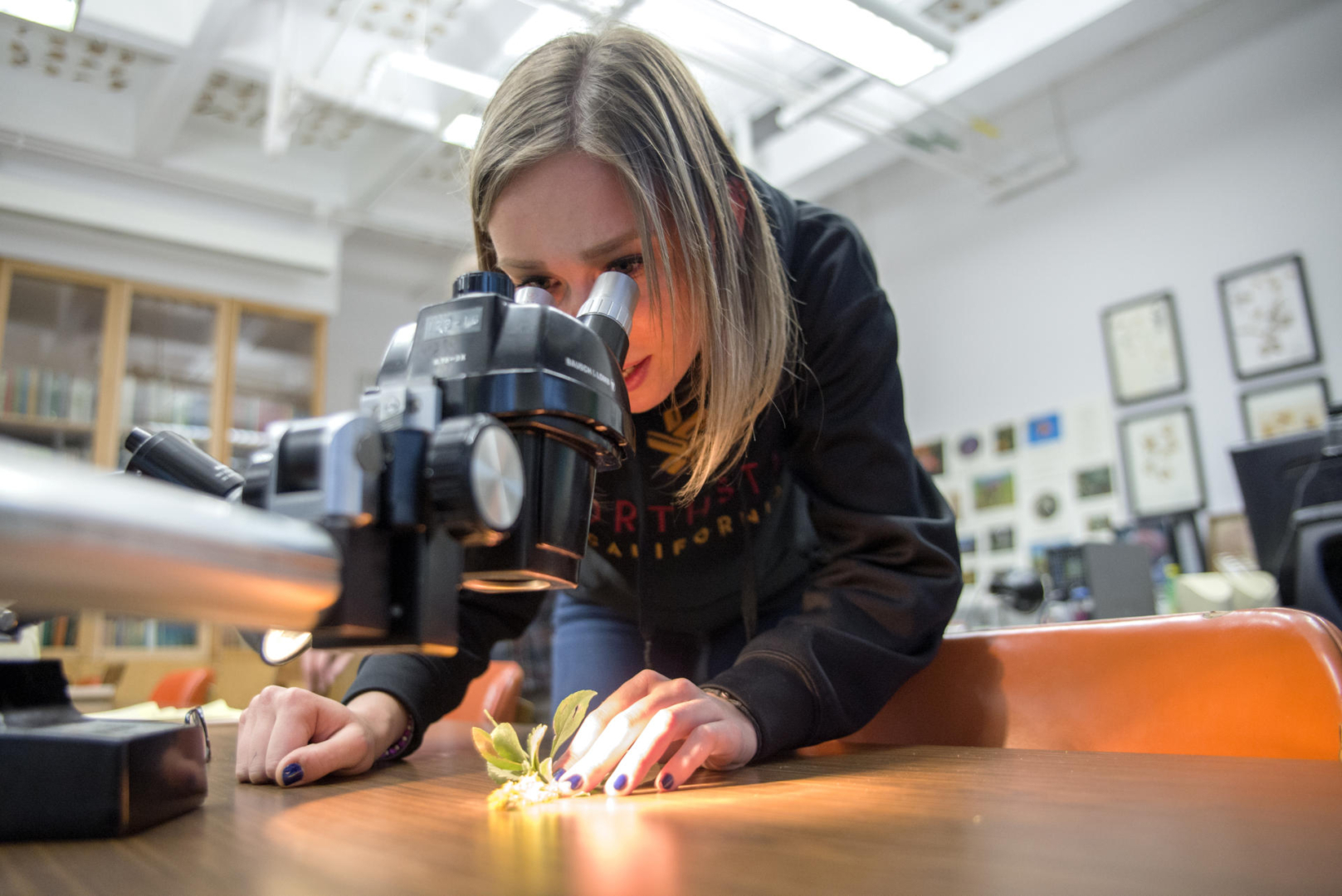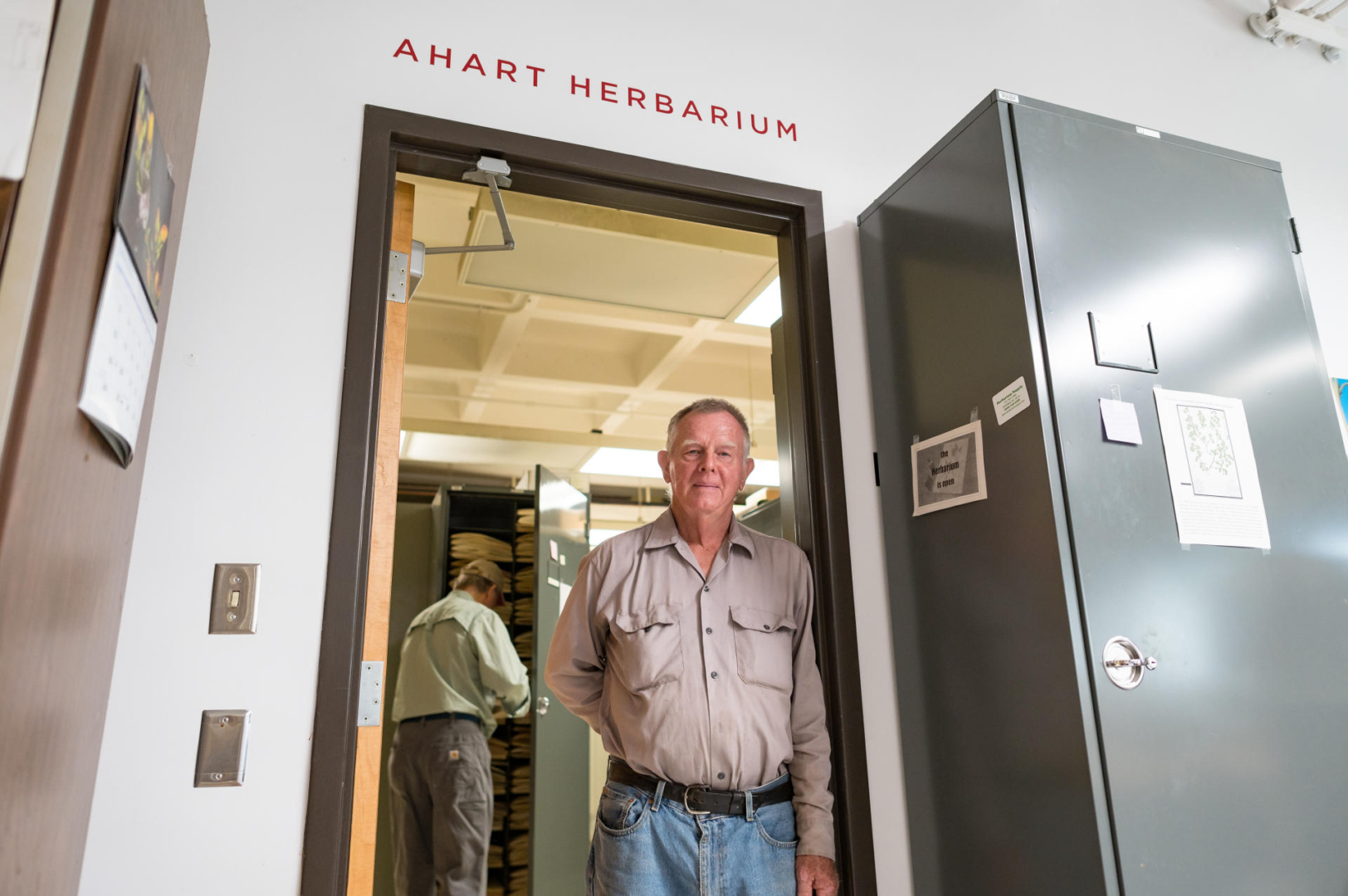Ahart Herbarium Rooted in Goal to Study Plants Over Time

Framed plants in the herbarium on Friday, January 29, 2016 in Chico, Calif. (Jessica Bartlett/Student Photographer)
Tucked behind an unassuming doorway in Holt Hall lies a botanist’s dream.
Rows upon rows of cabinets filled to the brim with flowering plants, conifers, and ferns fastidiously organized by genus and dating back years or even decades. A scent reminiscent of leaves drying in the autumn sunshine wafts out as guests search inside for a specimen, the occasional branch or seed pod peeking out between the pages.
“We really do have the history of the North State here,” said professor Colleen Hatfield. “It’s the perfect place to have an herbarium. We are within a couple hours’ drive of every major vegetation type you can imagine.”
As the most complete repository of plant specimens from northeastern California, the University’s Ahart Herbarium boasts more than 125,000 dried and mounted specimens that are now available to naturalists around the globe. Chico State is one of 23 herbaria across California that received National Science Foundation funding in recent years to cumulatively digitize 1.5 million images as part of the California Phenology Thematic Collections Network, and has used generous donations from Herbarium supporters such as Ahart to extend the endeavor to the entirety of its collection.
With new specimens arriving almost weekly—thanks in part to the herbarium’s namesake, retired rancher Lowell Ahart (Biological Sciences, ’61), whose specimen donations represent nearly one-sixth of the entire collection—it continues to be a resource for students, conservationists, land managers, and scientists. In its totality, it is a remarkable study in the botanical richness of the region and the adaptation of our natural world to urbanization and climate change.
Some of the specimens date back to the late 1800s and were collected by students of the Normal School. Whether the delicate purple petals of the annual herb Baby Blue Eyes (Nemophila menziesii), the silky seed plumes of Clematis lasiantha, or the spiky leaves of the yellow monkeyflower (Erythanranthe guttata), these century-old relics are worthy of a museum yet available to anyone who wants to study or admire them.
“The Herbarium documents time and space. Think about how much this landscape has changed in 100 years. A plant may be gone but we at least know it was there at some point,” said Hatfield, who has been its director since 2007. “And species that were abundant 100 years ago may be on the brink of extinction today.”
Every Friday from 9 a.m. to 5 p.m., volunteers gather to work on specimens and share the plants with the public in Holt Hall, Room 129. Guests can explore the collection during these hours or by appointment—and add to it with finds of their own.
Each specimen notes its date of collection, who gathered it, and where, which enables future collectors to return to the site and see if the plant still grows there or how it may have adapted.
With devastating wildfires becoming the new norm, taxonomists and botanists have been using the herbarium collection to aid in plant surveys of the landscape and to identify what plants may have vanished or appeared that were never there before.
The herbarium really took root in the 1950s with donations from the late Professor Vesta
Holt. With an emphasis on northern California flora, the collection also includes bryophytes, lichens, and a novel variety of slime molds, as well as a great number of rare, threatened, and endangered plant species.
“Almost any plant specimen counts,” Hatfield said. “We look at the herbarium as a great way to turn students on to the world of plants. It’s been really fulfilling, and students will come back and volunteer, or they go out and get jobs because of what they learned here.”

Laura Lampe (Biological Sciences, ’18; MS, Biological Sciences, ’22) discovered the Herbarium as an undergrad when she would spend Friday afternoons adding data from new specimens to the database and perfecting her skills at identifying plants. The experience planted a seed not only to further her education with a graduate degree but spurred the topic of her thesis.
Lampe devoted her master’s studies to using 156 years of herbarium records and 117 years of preserved insect specimens to examine how the timing of plant flowering and pollinator activity has changed over long periods of time as a way to monitor the impacts of climate change.
“The specimens in the herbarium also make it possible to compare and identify species that we find on hikes or in our neighborhoods, and to see plants in different life stages,” she said. “When students and community members learn to properly—and legally—collect, preserve, and submit specimens, they can provide really game-changing data for active research projects such as mine.”
Now working as the garden curator at Gateway Science Museum and as a botanist for environmental consultants, Lampe hopes to have a long career promoting public engagement with and protection and promotion of California’s native plants and collections.
“One of my favorite parts of herbaria is to flip through specimens and see fantastically preserved plants that span decades or longer and were, in some cases, collected by famous botanists,” she said. “I’ve come to know the geography and local history of our region so much more closely thanks to the plants and data in those cabinets.”
“My favorite preserved specimens are the especially old ones, for the glimpse at history that they give us,” Lampe added. “Hand me a stunner of a historic alpine buckwheat specimen, and I’ll be there for a while!”
To create a specimen, as much of the plant as possible is collected—from roots to flowers—and then placed in a paper press. Once tamped tightly closed, it spends up to 48 hours in a dryer, before it is mounted to paper. Armed with toothpicks, tweezers, and glue, collectors meticulously create their display so that viewers can examine every detail, from the leaf ridges of Rosa pisocarpa, the cluster rose, to the tiny tufts of Ahart’s nailwort, Paronychia ahartii, so named for its discoverer.
Ahart, who enrolled at Chico State College in 1956, happens to be particularly adept at mounting specimens in a way that not only clearly displays plant characteristics but also is visually beautiful. He began collecting specimens as an undergraduate after taking a class in plant taxonomy and donated 500 to the Herbarium in 1972. Since then, he has donated more than 20,000 others, several of which are framed and staged in the classroom of the Herbarium.

“He is truly an artist,” Hatfield said of Ahart’s specimens. “I am wowed by them all.”
She’s deeply grateful to Ahart, who made a gift in recent years to create an endowment to preserve the herbarium and its resources in perpetuity. In addition to the invaluable support of the Friends of the Ahart Herbarium, who puts on workshops as fundraisers, ranging from making wreaths with native plants to moss and lichen identification to native plant dyes, his gift ensures the hidden gem in Holt Hall, Room 129, will continue to be a living laboratory and historical archive for decades to come.
“It’s really fun to watch people come in with something that they can’t identify. We open the cabinets and the look of awe on their faces is just amazing,” Hatfield said. “We want everyone to experience the richness of what the Herbarium holds.”


